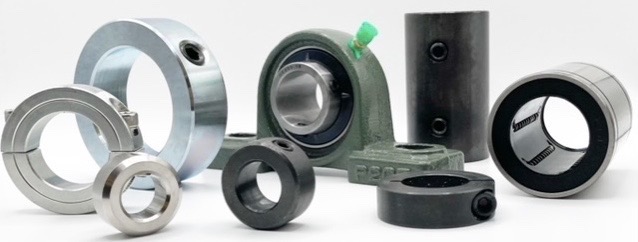
In industrial applications, equipment efficiency and durability are paramount. An essential yet often overlooked component is the industrial collar. Typically used to hold shafts, machinery, and rotating equipment in place, these collars are integral to operational stability. However, like any mechanical part, they can degrade over time. Knowing when to replace an industrial collar can prevent costly downtime and ensure safety. Here are five signs that it’s time to replace your industrial collars.
1. Visible Wear and Tear
The most obvious sign that an industrial collar needs replacement is visible wear and tear. Frequent use and high loads can cause collars to develop surface scratches, dents, or even cracks. If the collar has any noticeable damage, it may no longer grip the shaft properly, leading to reduced stability. Worn collars can also impact other components in the machinery, causing a ripple effect of inefficiencies. If you notice physical signs of degradation, it’s best to replace the collar promptly to prevent more severe equipment failure.
2. Loss of Holding Power
Industrial collars are designed to maintain a secure hold on shafts and other mechanical components, often under intense pressure. Over time, factors like material fatigue and continuous vibrations can reduce a collar’s grip. If you notice that your equipment is shifting or components are loosening during operation, this can indicate that the collar has lost its holding power. In such cases, replacing the collar is essential to prevent unintentional movement that could lead to unsafe working conditions or costly damage to machinery.
3. Corrosion and Rust
In environments with high humidity or exposure to chemicals, corrosion can become an issue, even for high-quality collars. Corrosion weakens the integrity of the collar, potentially leading to fractures or reduced holding capacity. Rust can be particularly problematic as it can spread and affect nearby components. Regularly inspecting collars for signs of corrosion and rust is crucial, especially if your machinery operates in challenging conditions. Replacing collars when corrosion appears is a proactive way to maintain equipment safety and efficiency.
4. Frequent Adjustments Needed
A reliable industrial collar should stay firmly in place without requiring frequent adjustments. If you find yourself frequently tightening or realigning a collar, it’s a clear sign that it’s no longer performing effectively. Loose collars compromise the alignment and stability of your equipment, which can cause increased wear on other parts. In these situations, replacing the collar can restore the necessary stability and prevent more extensive maintenance issues.
5. Excessive Vibration and Noise
Excessive vibration and noise during operation are often signs that a collar is not seated correctly or is no longer providing adequate support. This vibration can lead to wear on both the collar and surrounding parts, which, if left unchecked, can escalate into more significant problems. Collars that no longer dampen vibrations effectively are likely worn out or improperly fitted. Replacing these collars can mitigate excessive wear, reduce noise levels, and restore the smooth function of your equipment.
Conclusion
Industrial collars are crucial components that require regular inspection and maintenance. Recognizing the signs of wear, such as visible damage, loss of holding power, corrosion, frequent adjustments, and increased vibration, can help prevent major equipment failures. By replacing collars at the right time, businesses can ensure optimal performance, reduce maintenance costs, and extend the lifespan of their equipment. For high-quality, durable replacements, consider Summit Collars for your industrial needs.
Understanding when to replace these parts can keep your operations running smoothly and your team safe. Prioritizing these small but essential components makes a big difference in the longevity and efficiency of your machinery.

We are your source for standard stock and special-order power transmission products.
Sign up our newsletter to get update information, news and free insight.